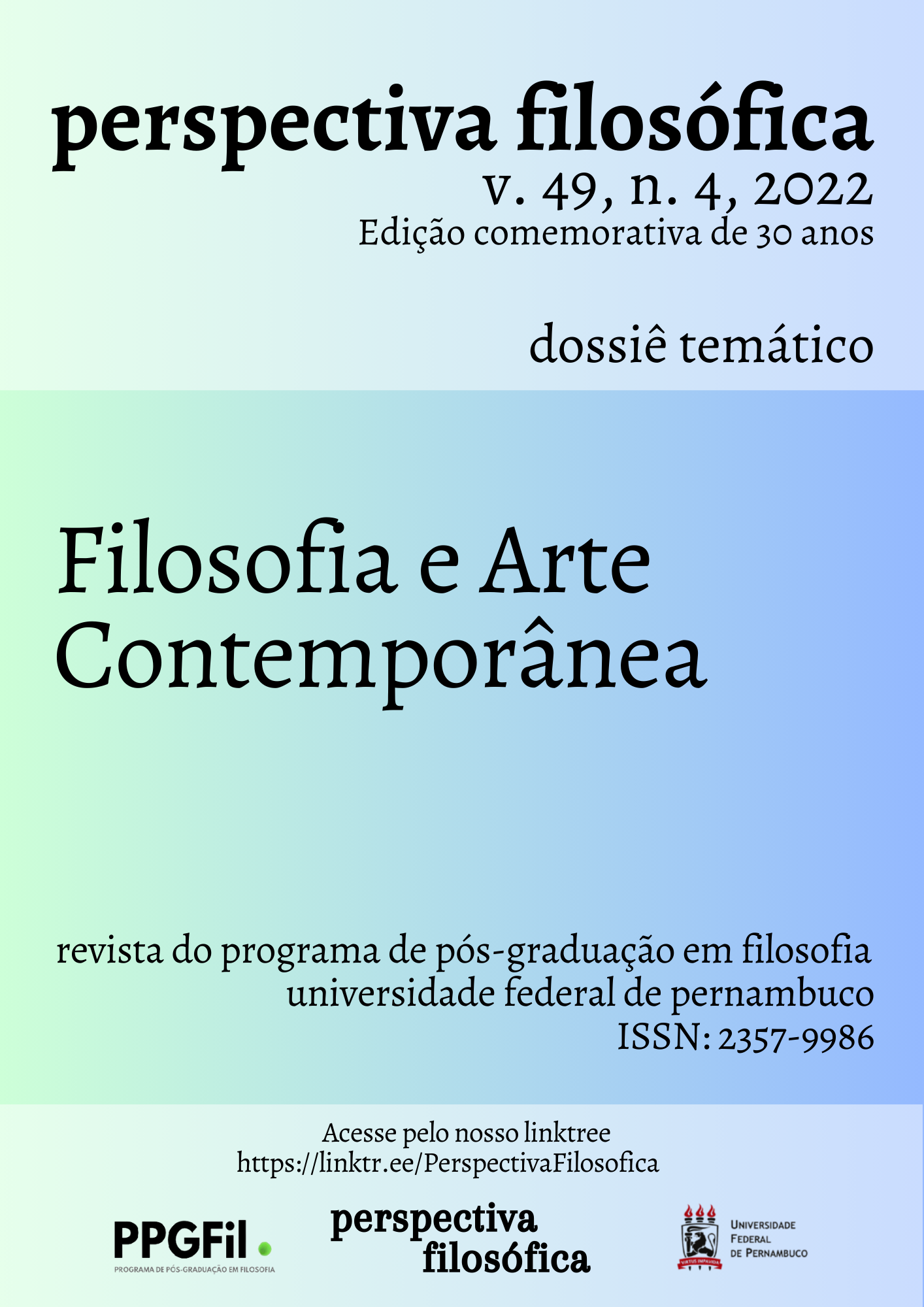Expression, individuation, articulation, and emotions in Collingwood
DOI:
https://doi.org/10.51359/2357-9986.2022.256177Keywords:
artistic expression, Individuation, emotions, R. G.CollingwoodAbstract
How to characterize the aesthetic specificity of our engagement, attention,or value associated with objects? We can target certain processes of imitati-on, or representation of reality. We can focus on reactions to formal disposi-tions of properties of these objects. But we can also point out continuitiesbetween aesthetic-type engagement with objects and action in general in thelifeworld. Works of art, from this point of view, in addition to the assertionsthat can be made through them, would communicate, or rather, would ex-press things like attitudes and emotions. Some contemporary philosophersof aesthetics believe that the expressive aspect is a fundamental part of thephilosophical examination of artistic processes. This essay goes throughsome of the reasons for this, using the example of R. G. CollingwoodReferences
COLLINGWOOD, R. G. (2009) A arte autêntica como expressão. In:MOURA, V. (Coord.) Arte em teoria. Tr. V. Moura. Ribeirão (Portugal):Húmus. pp. 39-58. [Capítulo traduzido de The Principles of Art.]
COLLINGWOOD, R. G. (1938) The Principles of Art. Oxford UniversityPress.
ELDRIDGE, Richard (2014) An Introduction to the Philosophy of Art.2nd. Ed. Cambridge University Press.
ROBINSON, Jenefer (2008) As emoções na arte. In: KIVY, Peter (Org.) Es-tética: fundamentos e questões de filosofia da arte. Tr. E. L. Calloni. SP:Paulus, 2008. pp. 223-244.
STOLNITZ, Jeremy (2007) A atitude estética. In: D’OREY, Carmo. (Org.)O que é arte? Tr. V. Silva e D. Murcho. Lisboa: Dinalivro. pp. 45-60.
Downloads
Published
Issue
Section
License
A Revista Perspectiva Filosófica orienta seus procedimentos de gestão de artigos conforme as diretrizes básicas formuladas pelo Conselho Nacional de Desenvolvimento Científico e Tecnológico (CNPq). http://www.cnpq.br/web/guest/diretrizesAutores que publicam nesta revista concordam com os seguintes termos:
Os autores mantém os direitos autorais e concedem à revista o direito de primeira publicação, sendo o trabalho simultaneamente licenciado sob https://creativecommons.org/licenses/by/4.0/deed.pt_BR que permite o compartilhamento do trabalho com reconhecimento da autoria e publicação inicial nesta revista.
Os autores têm autorização para assumir contratos adicionais separadamente, para distribuição não-exclusiva da versão do trabalho publicada nesta revista, com reconhecimento de autoria e publicação inicial nesta revista (Consultar http://opcit.eprints.org/oacitation-biblio.html).

Esta revista está licenciada com uma Licença Creative Commons Atribuição 4.0 Internacional.













